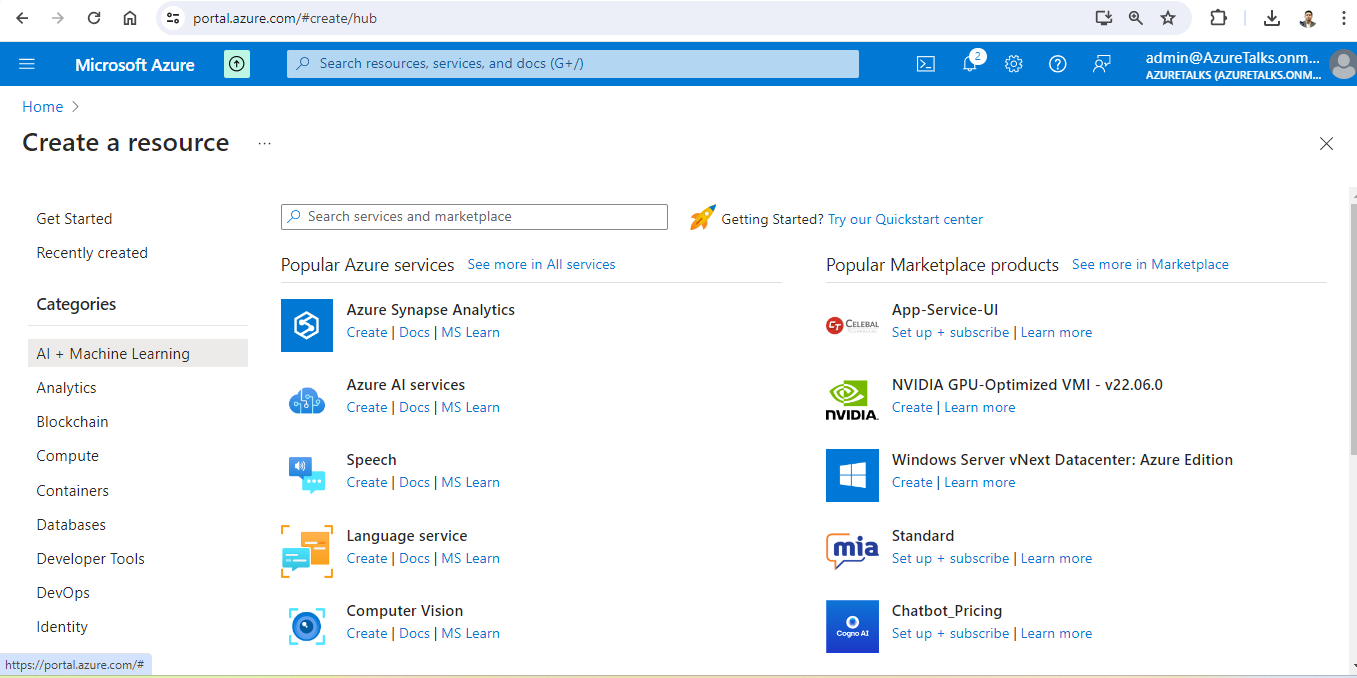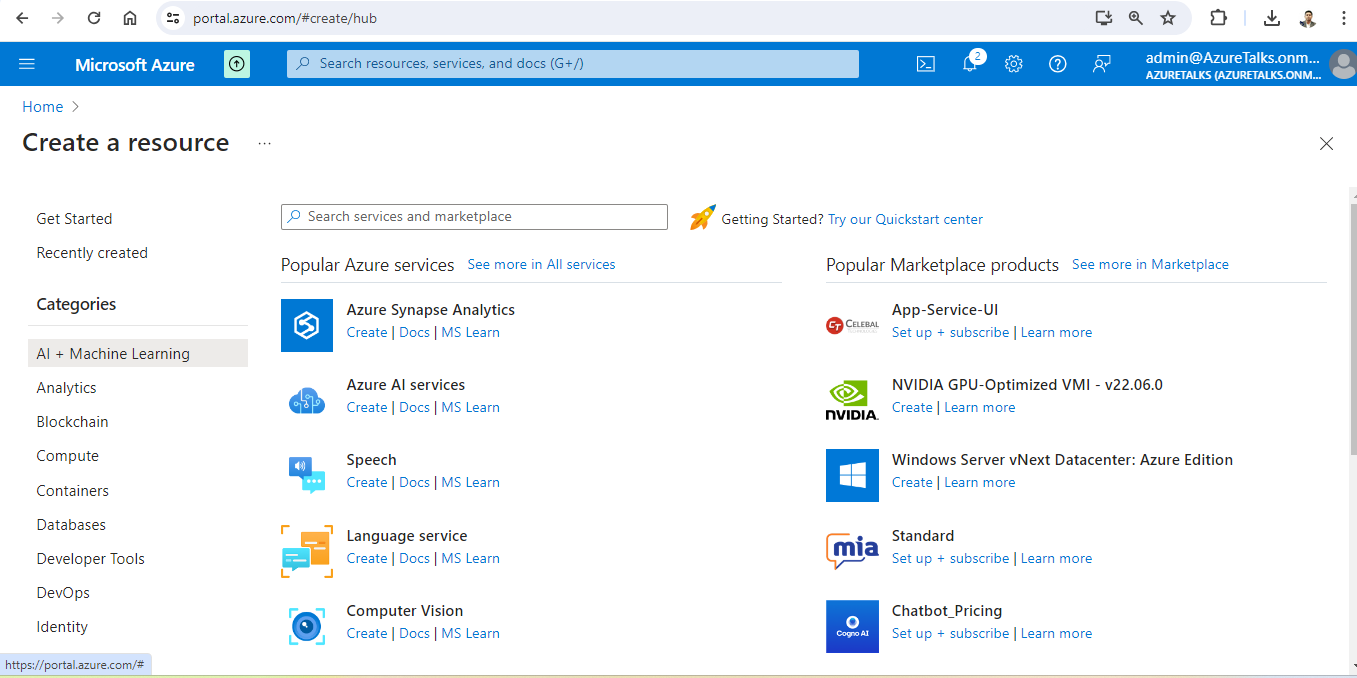Leveraging Azure AI for Advanced Retrieval Augmented Generation (RAG)
 Umesh Pandit
Umesh Pandit
I had to work on a task where data retrieval and search needed enhancement, and Azure AI came to my rescue to make the job simple and effective. Azure AI’s Retrieval Augmented Generation (RAG) significantly improves the accuracy and relevance of search results. This post will walk you through the process of leveraging Azure AI for advanced RAG, ensuring quick and precise responses, and improving user experiences.
Creating and Configuring Azure AI for RAG
First, let us understand what Retrieval Augmented Generation (RAG) is. RAG is a fusion of two fundamental components: retrieval and generation. The retrieval component identifies relevant data from a massive database, while the generation component leverages this data to produce accurate and useful responses. This integrated approach enhances the overall quality of search results, ensuring that users receive relevant and well-formed information.
According to Microsoft, RAG-powered search demonstrates a 25% improvement in search relevance. This means RAG can deliver more accurate results, benefitting businesses in numerous ways.
Setting Up Azure AI for RAG
1. Creating a Vector Database:
Step 1: Go to the Azure portal and select "Create a resource."
Step 2: Search for "Azure Cosmos DB" and select it.
Step 3: Click on "Create" and choose "Azure Cosmos DB for NoSQLI”.
Step 4: Fill in the required details such as Subscription, Resource Group, Account Name, and Region.
Step 5: Click "Review + Create" and then "Create" to set up your Cosmos DB account.
Step 6: Once the account is created, navigate to the "Data Explorer" pane and create a new database and container to store your vector data.
2. Configuring Azure AI:
Step 1: In the Azure portal, go to "Azure Machine Learning" and create a new workspace.

Step 2: Navigate to the "Machine Learning" workspace and select "Create a resource." Make sure to add all your desired aspects in the new workspace for your RAG.
Step 3: Feel free to choose your desired machine learning model for your RAG implementation.
Step 4: Once done, train the model using your vector database by linking it to your Cosmos DB container.
Step 5: Deploy the model as a web service for easy integration with your applications.
3. Integrating RAG Workflows:
Step 1: In your application, set up API calls to the deployed Azure Machine Learning service, that we have created above.
Step 2: Now, make sure that the retrieval component fetches relevant data from your vector database. And then, pass the retrieved data to the generation component to produce accurate responses.
Step 3: In the end, implement error handling and logging to monitor the performance and accuracy of your RAG workflows.
The Role of Azure AI in RAG
Azure AI is fundamentally responsible for improving the performance of RAG. It provides excellent tools and capabilities that can be easily combined with RAG workflows. Moreover, Azure AI relies on vector databases to store and handle massive amounts of data. This enables it to retrieve the best and most relevant data in a timely manner.
Also, the machine learning capabilities of Azure AI enhance the generation aspect by producing accurate and contextually well-formed responses. So, by using Azure AI, you can ensure quick data retrieval, search precision, and enhanced user experience. This ultimately places it among the best assets an enterprise can use to boost its search performance.
Real-World Uses of Azure AI for RAG
Azure AI for RAG serves various industries from different perspectives. In customer support, Azure AI identifies accurate responses to customer questions, enhancing satisfaction.
For instance, in the medical industry, it can fetch patient information and medical research, enabling physicians to make superior treatment decisions. Also, e-commerce firms can utilize Azure AI to recommend the right products to customers, boosting sales.
Generally, Azure AI can be used to simplify processes by offering quick and efficient information. This is critical for any industry that demands timely and correct data retrieval.
Conclusion
Azure AI offers tremendous search enhancement capabilities using Retrieval Augmented Generation (RAG). It boosts data retrieval by providing accurate and timely responses regardless of the industry. It enables enterprises to remain competitive and efficient in our modern data-centric era.
Follow Umesh Pandit
https://www.linkedin.com/in/umeshpandit/
https://www.linkedin.com/newsletters/umesh-pandit-s-notes-7038805524523483137/
Subscribe to my newsletter
Read articles from Umesh Pandit directly inside your inbox. Subscribe to the newsletter, and don't miss out.
Written by

Umesh Pandit
Umesh Pandit
🚀 Advisor Solution Architect at DXC Technology | 16+ years of IT Industry Experience 🚀 I am a seasoned Advisor Solution Architect at DXC Technology, a premier global digital transformation solutions provider. With over 16 years of rich experience in the IT industry, I specialize in helping organizations translate their strategic business objectives into tangible realities through innovative and scalable solutions leveraging Microsoft technologies. My expertise spans a wide spectrum of Microsoft offerings including Azure, Dynamics 365 for Finance and Operations, AI, Microsoft 365, Security, Deployment, Migration, and Administration. Additionally, I bring valuable experience in SAP, CRM, Power Platform, and other cloud platforms to the table. Throughout my career, I have spearheaded the successful delivery and support of over 300 projects, consistently adhering to the best practices and standards set by Microsoft and the industry at large. Moreover, I take pride in my role as an educator and mentor, having empowered over 50,000 professionals and students worldwide through training, guidance, and knowledge-sharing initiatives. Passionate about staying at the forefront of emerging technologies, I thrive on continuous learning and am dedicated to fostering a culture of knowledge exchange within the tech community. Let's connect and explore opportunities to drive transformative outcomes together!